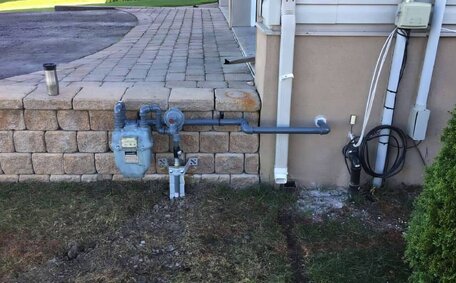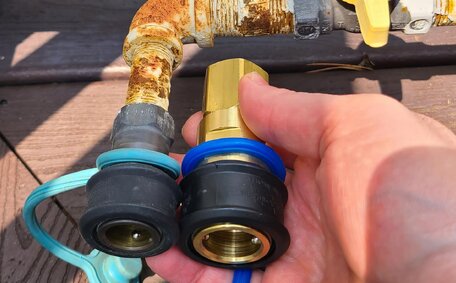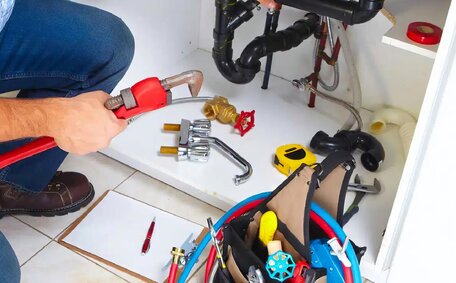Identifying and diagnosing toilet leaks and noises
A noisy or leaking toilet can be vexing. Promptly identifying the issue’s source is vital for an effective repair. The following tips will assist in diagnosing common toilet leaks and noises:
Signs of a Leak
- Water on the floor around the toilet base can prompt the need to fix toilet wax ring seals, which may indicate a leak between the toilet and floor, or an overflowing tank.
- Persistent hissing or running water suggests a leaky flapper valve, continuously letting water into the bowl.
- Intermittent water flow into the overflow tube suggests a malfunctioning toilet fill valve, which may also generate noise.
Signs of Noise
- The noise after flush is often described by hammering or banging sounds, known as water hammer, resulting from water pressure changes and pipe movement.
- High-pitched screeching - Potential issue with the float cup within the fill valve toilet not closing completely.
- Gurgling sounds - Buildup of deposits can cause restrictions and air bubbles in the flush flow.
A detailed inspection of the cistern is crucial to pinpoint the source of a water leak. Should you require to tackle any leaks or if sounds continue, you might need help from a certified plumber on the Gold Coast.
Common causes of toilet leaks
There are several common causes behind toilet leaks:
Worn Out Flapper Valve
Situated at the tank’s base, the rubber flapper functions as an inlet valve, releasing water into the bowl upon flushing. Understand that the flapper may harden, warp or crack over time, causing leaks. If there’s a mixture from the water heater of hot water and cold in your toilet tank, it can lead to a worn out flapper valve, one of the most prevalent reasons for toilet leaks.
Loose Connections
In tankless systems, loose lock nuts on the water supply line may require toilet repair due to resultant dripping noises. Water leaking onto the floor around the toilet base often signals that the tank mount bolts under the toilet seat have become loose.
High Water Pressure
When flushing, excessive water pressure can lead components to relax and begin leaking, which might bring the water level too high. Water pressure that’s higher than 80 PSI can attribute to possible leaks.
Mineral Deposits
Deposits from hard water, such as calcium and magnesium, can accumulate, damaging your valve and piping, necessitating repairs. This situation inhibits optimal sealing and leads water your system into the toilet bowl.
For continued optimal toilet function, consulting a skilled plumber for part replacement or adjustments due to high water pressure and mineral buildup is recommended.
Flapper valve issues
You should investigate the flapper valve, a common culprit behind toilet leaks and noises. Located at the bottom of the toilet tank, the flapper is a rubber seal that lifts when you flush, which you’ll need to check to avert situations where it can cause your toilet to malfunction. When the flapper is faulty, it can cause the following problems:
Continuous Leaking
A stiff or damaged flapper valve may fail to form a tight seal at the opening, causing your toilet cistern to leak. This scenario allows water to continuously seep from the tank directly into toilet, causing relentless running water noises. You might notice the toilet bowl refilling itself promptly when toilet flushed, and at intervals in between as well.
Intermittent Running
If the flapper stays open temporarily before sealing again, the toilet may emit noise. This leads to your toilet making noise, turning on and off repeatedly, accompanied by swooshing sounds as water enters the bowl.
Poor Flush
A flapper that has hardened may not open properly during toilet flushing, potentially causing your toilet to operate inefficiently. This limitation hinders water flow, resulting in a feeble or partial flush.
Phantom Flushes
A defective flapper may cause phantom flushes, making the toilet appear to flush autonomously. The toilet might produce sounds resembling automatic running and refilling, as if it’s self-activated.
Replacing a faulty toilet flapper is an uncomplicated, cost-effective DIY solution you’ll need to consider. Ensure the replacement flapper is compatible with your toilet model. Adjusting a chain that is too tight or loosening a stuck flapper can also help resolve flapper issues.
Fixing a leaky flapper valve
A leaky flapper valve is one of the most common causes of a running toilet. Replacing the flapper is an easy DIY task that can stop leaks and noises.
Not sure how to handle a leaking toilet when tank components fail? Follow these steps:
- Shut off the toilet’s water supply using the valve behind the toilet.
- Drain the tank by flushing the toilet, then inspect the refill tube after removing the tank lid.
- Disconnect the flapper chain from the flush lever.
- Remove the old flapper by lifting it from the flush valve seat for replacement.
- Examine the flush valve seat and overflow pipe for any mineral buildup or detriment and then cleanse scrupulously.
- Fit the new flapper, ensuring the valve seal is secure against the flush valve seat.
- Reconnect the flapper chain to the toilet handle with about 1/2 inch of slack.
- Turn water supply back on and let the toilet fill up again.
- Perform multiple test flushes to confirm that the leaks have been resolved.
If necessary, adjust the flapper chain length to prevent it from sticking open and causing noise. Make sure the new flapper size matches the toilet tank. With a suitable flapper installed, expect your toilet to flush silently and efficiently once more.
Should flapper adjustment not stop the leak, consider replacing the fill valve, flush valve seat, or tank bolts. Contact a professional plumber for additional help diagnosing and fixing persistent toilet leaks.
Dealing with toilet noises
Toilet noises are bothersome and usually signal underlying issues. Here are some common toilet noises and how to address them:
Water Hammer
Loud banging or noise coming from your pipes when the main water supply valve is utilized to flush the toilet may indicate water hammer. Water hammer occurs when fast-moving water halts abruptly, causing vibrations and noise by forcing water backwards in the plumbing system. Installing water hammer arrestors on your water line can mitigate these surges and reduce noise, even when the water is off.
Ghost Flushing
If the toilet periodically flushes on its own when no one is using it,
A faulty flapper valve that isnt sealing properly could be the culprit. Replacing the flapper can solve this. Adjusting the flapper chain length may also help.
Running Water
The sound of continuous running water, or noise which you can hear when toilet use has ceased, usually indicates a leak. This could be due to a flapper issue allowing water to constantly enter the bowl. Checking for cracks, warping, and proper seating of the flapper can help resolve this.
High-Pitched Screeching
A sharp, screeching sound from the top valve when the toilet fills may indicate deeper issues. Sediment buildup or failing to adjust water levels properly with the float ball arms could cause interference and noise. Cleaning or replacing the fill valve assembly can quiet this down.
Gurgling
Bubbling and gurgling sounds often result from blocked vents or sediment accumulation in toilet traps and pipes. To clear blockages, try several flushes or use a plunger to dislodge any obstruction. For persistent gurgling, inspecting the sewer line with a professional sewer snake may be necessary.
Immediate action on noises can prevent the exacerbation of leaks or future damage. If DIY methods fall short for your plumbing needs, reaching out to a skilled plumber is advisable to inspect and rectify persistent toilet noises.






